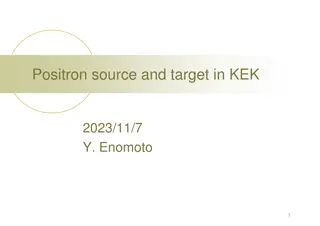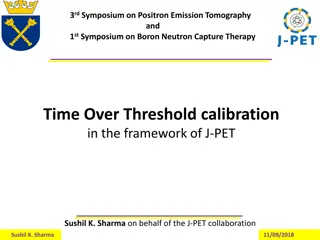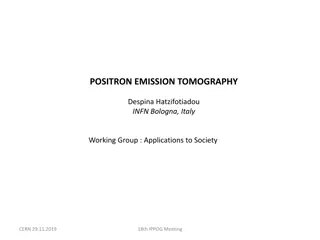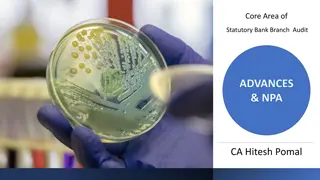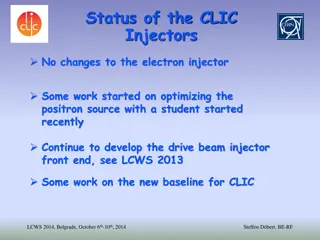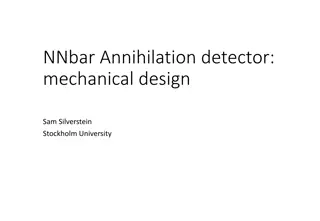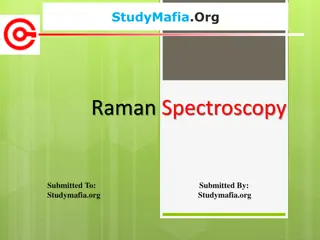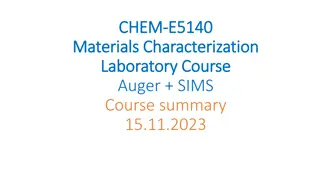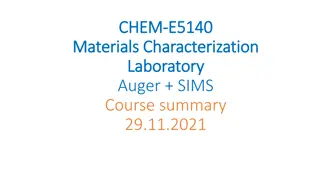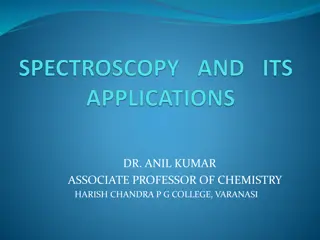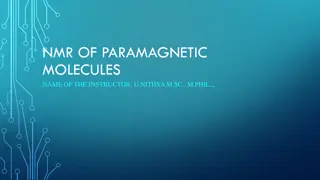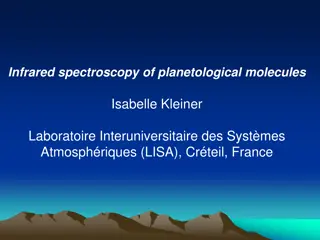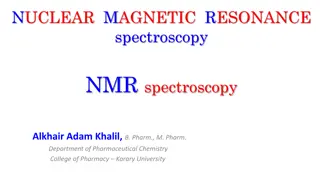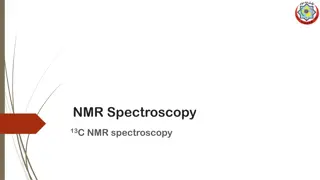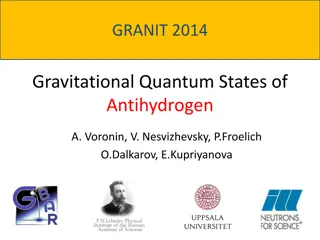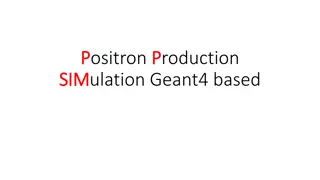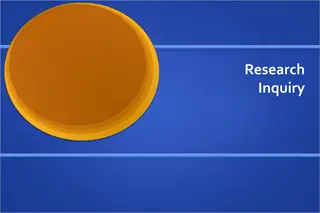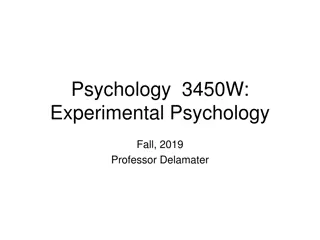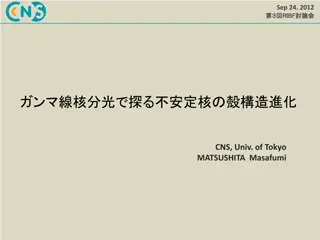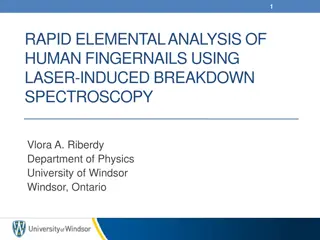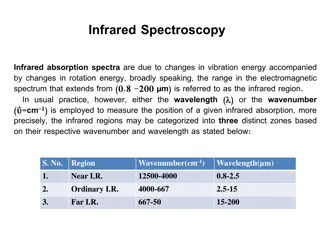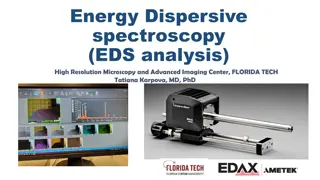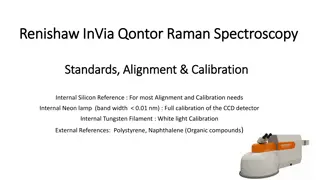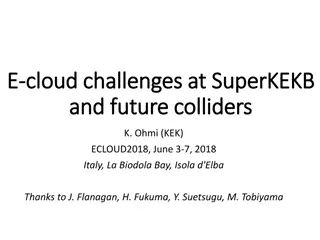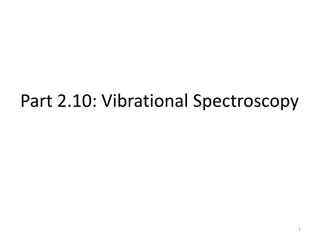Advances in Positron Annihilation Spectroscopy and Experimental Research at DLNP Science and Technology Council Dubna
Positron annihilation spectroscopy (PAS) is a powerful technique used to study material structure and defects. DLNP Science and Technology Council in Dubna has been focusing on developing experimental techniques with slow monochromatic positron beams, leading to advancements in defect characterization and defect interactions. The current investigations include studies on materials for IV type nuclear reactors. With ongoing projects and plans, DLNP is at the forefront of creating a modern positron annihilation research laboratory for structural characterization of solids.
- Positron Annihilation Spectroscopy
- Experimental Research
- Material Structure
- Defect Characterization
- Nuclear Reactors
Download Presentation

Please find below an Image/Link to download the presentation.
The content on the website is provided AS IS for your information and personal use only. It may not be sold, licensed, or shared on other websites without obtaining consent from the author. Download presentation by click this link. If you encounter any issues during the download, it is possible that the publisher has removed the file from their server.
E N D
Presentation Transcript
DLNP Science and Technology Council 10 December 2020, Dubna Elections for the position of the head of the electron cooling sector Applicant: Krzysztof Siemek
DLNP Science and Technology Council 10 December 2020, Dubna Development Development of experimental techniques and applied research with slow of experimental techniques and applied research with slow monochromatic positron beams (PAS monochromatic positron beams (PAS) ) Project leaders: K. Siemeka),b) ,A.G.Kobetsa),c) Scientific leader: I.N.Meshkova) a)Dzhelepov Laboratory of Nuclear Problems of Nuclear Problems JINR, Joliot-Curie 6, 141980 Dubna, Moscow region, Russia b)Institute of Nuclear Physics PAS, E. Radzikowskiego 152, 31-342 Krakow, Poland c)Institute of Electrophysics and Radiation Technologies, NAS of Ukraine, Chernyshevsky St. 28, 61002 Kharkov, Ukraine Aim: Creation of a modern positron annihilation research laboratory for structural characterization of solids.
Positron annihilation spectroscopy (PAS) Positron annihilation spectroscopy (PAS) is a suitable tool for studying changes in the material structure. It is a sensitive method for the detection of open-volume defects such as vacancies, vacancy clusters, dislocations etc. Possibilities: defect characterization on the atomic scale investigations of non-equilibrium defects created by irradiation or plastic deformation studies of defect interactions investigations of thermal stability of defects and defect recovery with increasing temperature PAS techniques: angular correlations of gamma quanta Doppler Broadening spectroscopy (DBS) positron annihilation lifetime spectroscopy (PALS) 3
Measurements possibilities at DLNP Doppler Broadening spectroscopy (DBS) positron annihilation lifetime spectroscopy (PALS) Doppler Broadening spectroscopy (DBS)
Project progress and plans Realized in 2018-2020: The slow positron specialized channel construction was completed The new method of ordered flux was invented A system of reactive ion etching was developed Equipment for the Spectroscopy method was gathered Experimental research several areas Coincidence Doppler was conducted in Plans: Implementation of method of ordered flux Continuation of experimental research 5
Current investigations Studies of the destructive process: Studies of materials for usage in IV type nuclear reactors - Institute of Nuclear Physics PAS, Cracow [dr. P.Horodek], University of Szczecin [prof. K.Czerski], JINR [dr. V. A. Skuratov, dr M.N. Mirzayev, dr E.P.Popov]; Studies on high irradiation resistivity materials, nanostructuration PTU Tomsk [dr R. Laptev]; Cavitation, wear, corrosion process- Institute of Nuclear Physics PAS, Cracow [prof. J.Dryzek], Northern Arctic Federal University, Arkhangelsk [dr. M.Eseev]; Studies of modification of materials: Surface modification by ion implantation in semiconductors and MOS structures JINR, UMCS Lublin [dr M.Kulik]; Surface modification of zeolite ZSM-5 by irradiation - CNT Hochiminh [dr Luu Anh Tuyen]; Study of defects in optical materials - IGM SB RAS and NSU, Novosibirsk [dr. L.I. Isaenko, dr. A. P. Yelisseyev], JINR [dr. A.V Belushkin]; The role of defects in magnetic properties in BaTiO3nanopowders - STU, Voronezh [prof. L.Korotkov,]; Mechanical modification of materials sandblasting, hydrostatic extrusion, surface modification attrition techniques -Institute of Nuclear Physics PAS, Cracow [dr. P.Horodek, dr. E.Dryzek], AGH University, Cracow [dr. M. Wr bel], Rzesz w University of Technology [dr. W. Nowak].



